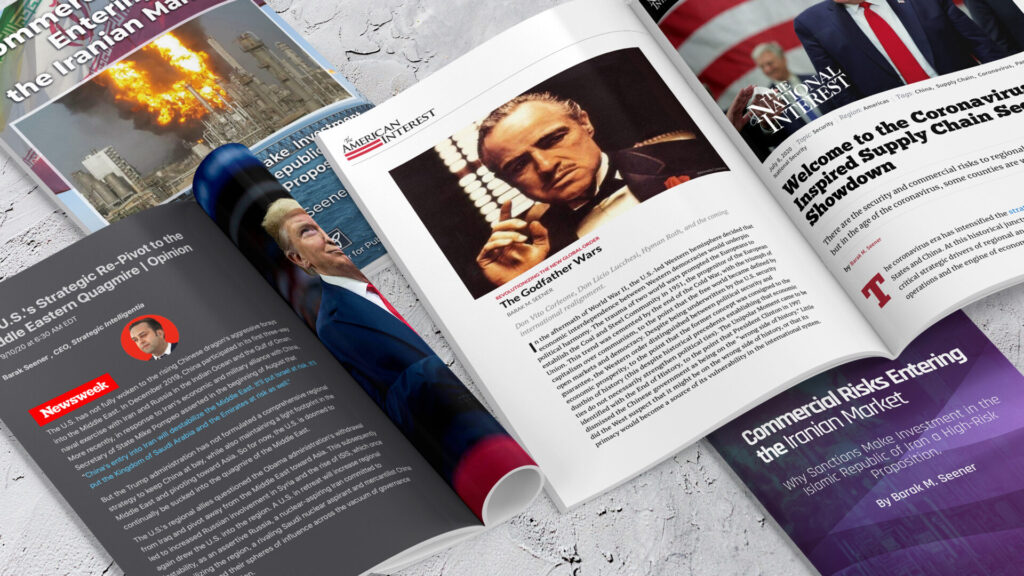When people ask me what I do, and I respond with, “I own a strategic communications company,” I’m generally met with a blank stare. That’s often followed generally by, “Strategic communications? You mean like PR, Marketing and Advertising?” To which I have to say, “Yes, it’s part of what we do but much more complex than that.” At this point, I generally tell them to get a refill of whatever they’re drinking and sit them down to explain exactly what strategic communications really entails and exactly what it is – I mean they did ask. Bless.
So, what is it? For Evoke it’s pretty specific and drawn from years of work in countries in conflict, emerging from conflict, or in countries managing other challenging social change efforts. For awhile those types of campaigns were called “influence campaigns”, or “winning hearts and minds”. But the limits of that thinking quickly became apparent. If your aim is to help empower people, you don’t do that by telling them what to do. So efforts to engage, empower, and grow positive change have now evolved into social change enabling campaigns – and no, before you ask, it is not “propaganda”. These campaigns only work if they truly connect with people, with their hopes and aspirations. So these campaigns are far more nuanced than that, based on factual (not fake) news, and do not have nefarious intentions.
So where did it all start and where and why was the naming evolution necessary? I can only tell you our story and what it means specifically to us. We needed a new term, because ‘strategic communications’ is a very broad term used by many people to cover a wide variety of ideas. It is used by practitioners to mean everything from preparing for a shareholder meeting, to making a political statement, to announcing a new product. So “strat comms” can mean almost anything. But we do something much more specific. We’ll talk about that, but you really should go and get that refill now.
So let me me give you some context first before we dive in. Back in the mid 2000’s the U.S. was embroiled on two fronts in Afghanistan and Iraq battling against Al Qaeda, the Taliban and numerous other offshoot terrorist groups. I won’t get into the politics of those conflicts but will just stick to where we fit in with all of this. The countries involved realized that conflict could not just be won through sheer might and will and that their intent, purpose and message needed to be imparted to the public to garner support, unity and understanding. The problem was that they were talking ‘at’ people and it was not being received well at all. In fact, it was driving anti-western and anti-coalition sentiment. I was part of an incredible team of people who recognized that we had to pull apart everything we were doing and start from ground zero because what was being done clearly wasn’t working.
A team of social scientists, anthropologists, marketers, advertising experts, psychiatrists and strategists, were brought in and we realized that we needed to create a three-way communications system – speaking to the people, but also listening, closely, getting their feedback, and then showing the outcomes of that dialogue – good, bad or indifferent. This is now known as engagement, but it wasn’t so obvious nor utilized back then – campaigns were primarily based off the ‘tell them what we want them to hear and sell, sell, sell’ mantra. Based off the new approach and data, strategies were developed to match the non-kinetic with the kinetic activities on the ground. Kinetic being the operational, tangible and physical actions happening on the ground with the non-kinetic, the messaging, narrative and dialogue. The two had to work in tandem to back the other up – talk without action and is just that talk, and action without talk may have limited effects – they need each other to be effective. So a new form of ‘strategic communications’ was born, backed by the qualitative and quantitive data we received from the research teams on the ground. We had to know what the sentiment, perceptions and ideologies were in order to relate and for the messaging and educational aspects to resonate, followed by if they really were resonating – in parlance the measures of effect (MoE) and measures of performance (MoP). It was incredibly successful and we passed the new methodologies back into the commercial world, where advertising companies began employing this with their own clients such as Nike, Coca-Cola, McDonald’s and the like, using an emerging tool called social media. We continued testing new methodologies and passing them back. Our ideas, and the work of others, shaped forms of engagement with social media at the end of the aughts. Companies realized that they had the opportunity to easily engage with their publics and employ these new methods with very little effort interactively, as opposed to the traditional broadcast methods of radio, TV and print – not to mention the potential for significant reduction in cost for that engagement.
Fast forward to my starting Evoke. In this same period, we began developing similar social change campaigns across Africa and Afghanistan on behalf of NGO’s, governments and corporations for everything from educating populations of nascent nations new to democracy on governance and rule of law, to HIV awareness initiatives, anti-bunkering and sabotage campaigns in the Nigerian Delta and anti-piracy in Somalia. During this period we realized that research was often cost-prohibitive, biased based on limited samples, and often risky for teams on the ground. But more importantly, “target audience” focused research doesn’t help you understand the system that the audience lives in, and responds to. And research is inevitably dated by the time you finish it. It’s always about yesterday, and ages from the day your stop collecting it. So something more is needed for large scale campaigns on such narrow data. There had to be a better way, and indeed there was. A former colleague had been developing a mapping, modeling and visualization software tool that had open source data mining capabilities. So, we added simulations and data analysis to the system and CAST (Commercial/Conflict Analysis Software Tool) was born. Traditional data gathering tools remain useful, but now we now had access to reams of additional data and could contextualize it, map it and understand the behavior and sentiment behind it, giving us not just a full 360° picture of our world, but the tools to use it as leverage-able, meaningful and implementable data. These tools have given us significant capabilities of predictive forecasting, which (depending on the situation) now have accuracy rates up to 90% even in complex bargaining and negotiation situations (oh, shameless plug, I know).
Having this new tool pulled us into a whole new dimension of strategic communications. Suddenly we had a clear new insight into what people where doing and more importantly why. We understood causation, why people where behaving the way they where, why they were buying, not buying, investing or not investing – why markets where behaving the way they were and the geopolitical impacts on both. It meant that we could create strategies and ESG criteria not just for campaigns but companies at large – both for their business, stakeholders and internal and external communications. For business strategies we could now look at where the company wanted to be in 5,10, 20 years down the line and reverse engineer those strategies to affect those outcomes and help both implement and monitor those strategies – knowing the actual KPI’s and KRI’s and the MoE’s and MoP’s in between.
For stakeholders and boards, this gave them real insights backed by qualitative and quantitive data and moved them away from the ‘Inshallah’ model of implementing strategies and campaigns. For internal communications, it meant that we could look at where the issues were, where the blockages and breakdowns were occurring internally and what was working well, letting us create processes, platforms and procedures to ease communications (this includes digital transformation), streamline engagement and have a top down, bottom up approach that meant everyone in the company knew the direction the business was headed in, what was happening and gave them a voice inside that process. The secondary effect being that employees felt they had a vested interest in the business and created a company of brand champions and ambassadors, all moving in the same direction. Nothing works better than word of mouth both internally and publicly, which also affects corporate reputation, leading into external communications. Once the house is in order internally on the communications front and everyone has full insight and understanding, the external communications generally happens organically from there – because the fabric of the company and what it stands for naturally emerges during that process and the employees and leadership are living and breathing it.
we really ‘know’ Strategic communications
We employ the same tactics for the external communications and marketing campaigns and it is incredibly effective because it is real, monitored, sustainable and legacy building. This is where the PR, marketing and advertising portion, as you know it, comes in. All three are utilized in external communications and campaigns. Corporations generally don’t realize that the reputation and rapport that they develop with their employees has a direct effect on their public reputation and consumer opinion. With tools like Glassdoor and LinkedIn, it’s very easy to see if companies really are walking the walk and are as equally invested in their employees as they are their customers – and that matters significantly in today’s market. PR is used for reputation management of both the company and the leadership within and its incredibly important to have a PR strategy, which we use all of that data and our strategies to forge and implement. Every opportunity that you have to speak to your audience and publics should have a multi-layered approach. It should be used to not only broadcast who you are and what you are and are not doing, but create a bubble of protection around the company for when a crisis happens down the road (and it will happen), giving companies a track record of solid performance and ethics they can lean on when crisis does hit (we also help with crisis management as well but that’s for another day). Everything in communications should have a multiplicity of purpose, because as Andre Gide said, “The color of truth is grey,” especially in today’s world of instant global broadcast. Being the master driver of your messaging is critical in today’s world and you should know well in advance what that is – because if you don’t, the world won’t either and bad messaging tends to get very messy very quickly and very hard to put back in the box. Marketing and advertising are applied just as you would imagine within that framework we develop – to include the messaging and content. We wrap our arms around every single aspect of what I just mentioned and pull it into one singular strategy – implementing each within their own lanes simultaneously. That is really the crux of strategic communications. It is holistic, comprehensive and accountable to each of its parts – all working in tandem together for each and every facet of the business or organization to achieve the desired outcomes.
Going briefly back to CAST and the path it ended up leading us down, it also gave us the power to conduct due diligence far beyond the normal KYC functions, to include looking into companies on behalf of venture capitalists and investors – looking into corporate culture, ESG, reputation, management, product placement, market feasibility and sustainability. This led us into corporate intelligence and because of our predictive forecasting and behavioral models effective contract negotiation – knowing what the parties would and wouldn’t compromise on or agree to. And in turn, it allowed us to develop profiles of the types of investors these companies were looking for, where to find them and how to close the deal. Essentially, it’s the equivalent of having a crystal ball backed by qualitative and quantitative data – going into further detail will make your brain combust – which is why I leave that to our rocket scientists, who really are legitimately rocket scientists. None of this is easy – there is a tremendous amount of work involved in understanding complex social situations. But we have achieved a remarkable step-change in our ability to work with clients to understand their worlds, their problems, and how to engage those worlds systematically, over time, to solve client problems.
So if you want to boil it down, our version of strategic communications is really about having incredibly deep 360° insight, the ability to translate those insights into comprehensive, effective, strategies, and to implement and adapt communications campaigns to achieve long-lived success for the companies we work with. Because CAST is about understanding complex environments, we can help business understand every aspect of their business, including how they engage with their world and industry.
Did that clear it up? No? In that case, grab your coat and let’s go to dinner so we can really get into the weeds of it or just give us a call. I mean you don’t really want to know how the sausage is made, so while you’re concentrating on where you want your business to be, we’ll make that vision happen for you top to bottom – we are very Harry Potter that way, except we’ve got a way better track record. I mean, if we can shift ideological mindsets on a regional scale for the greater good, we can sell shoes, clothes or any other product or service you may have in mind. The principles are the same – it’s just how you execute it that makes the difference. That’s probably the best way to explain it in its simplest form, so let’s just leave it at that and go grab that dinner.

















